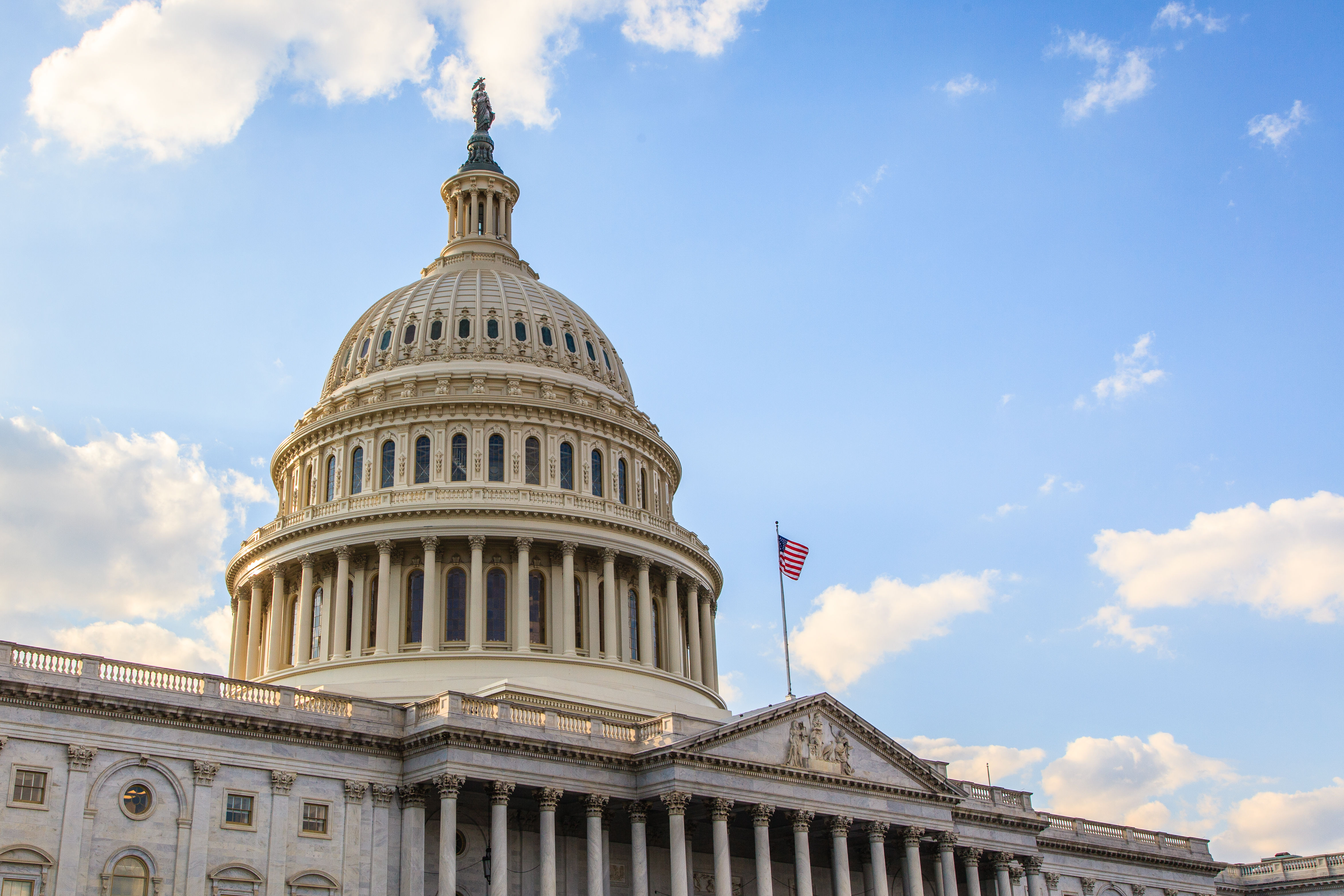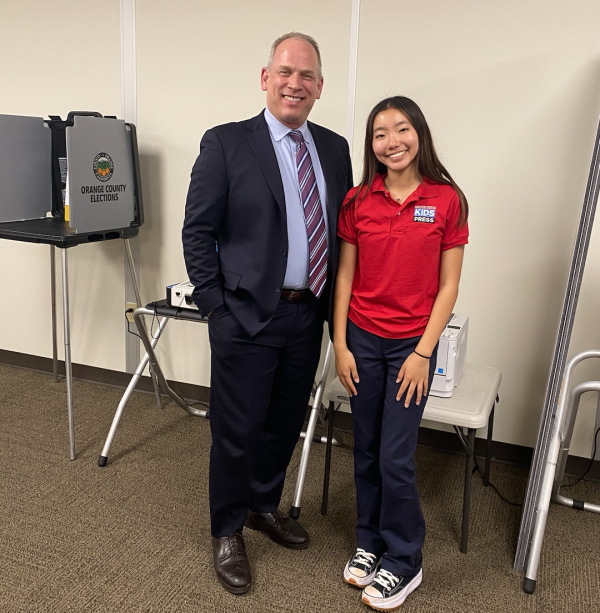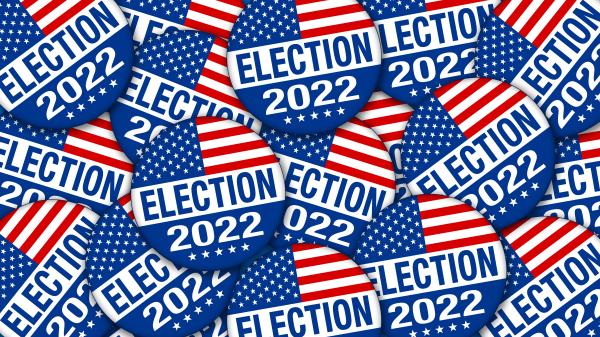KID REPORTERS’ NOTEBOOK
Getting Voters to the Polls


Elise with Bob Page, the Orange County registrar. His goal is to help people “learn how to register to vote and exercise their right to vote.”
On November 8, voters around the country will head to the polls to vote in midterm elections. United States Senators and Congressional Representatives in several states are on the ballot. The results of those elections will determine whether Democrats or Republicans will control Congress in January. Other pivotal elections are also taking place for state governors, state legislatures, and even local mayors.
Midterm elections occur in the second year of every four-year term of the U.S. President. While Presidents are elected for four-year terms, members of the House of Representatives face re-election every two years. Senators are elected to six-year terms, with other state and local officials elected at varying intervals.

The policies of elected officials affect everything from education to the environment to social justice.
REGISTERING VOTERS
Leading up to the midterm elections, voting rights and other civic organizations work hard to register new voters. The League of Women Voters, a 100-year old voting rights organization, focuses on “bringing new voters and new voices into the voting process,” said Jeanette Senecal, the League’s senior director of Mission Impact. “The first step,” she added, “is registering people to vote.”
I also spoke with Bob Page, the Registrar of Voters in Orange County, California, where I live. He said that he strives “to make sure every eligible citizen in Orange County can easily learn how to register to vote and exercise their right to vote.”
Before each election, Page visits high schools to encourage students to pre-register to vote. In order to receive a ballot and cast a vote, states require voters to be registered in advance, either online or by mail.

U.S. Senate and House races across the country will determine whether Democrats or Republicans control Congress in January.
ENGAGING YOUNG PEOPLE IS “KEY”
The minimum age to vote in the U.S. is 18. But individuals between the ages of 18 and 24 have been historically underrepresented in elections. In the 2020 presidential election, for example, voter turnout by age was the lowest among voters ages 18-24, according to the U.S. Census Bureau. Only 51.4% of eligible young people cast a ballot.
“It’s never too early to get involved in the civic process,” Senecal said. “Today’s youth are tomorrow’s leaders.”
High school students who are too young to vote can serve as poll workers or assist in a local elections office.
“Community engagement is a key value we must teach our young people,” Page said.
Many elections are won by small margins, where an increase in youth turnout could make a difference. The policies of elected officials affect everything from education to the environment to social justice. By voting or helping others to vote, Page said, young people can “influence how their communities are governed at the local, state, and federal levels.”
